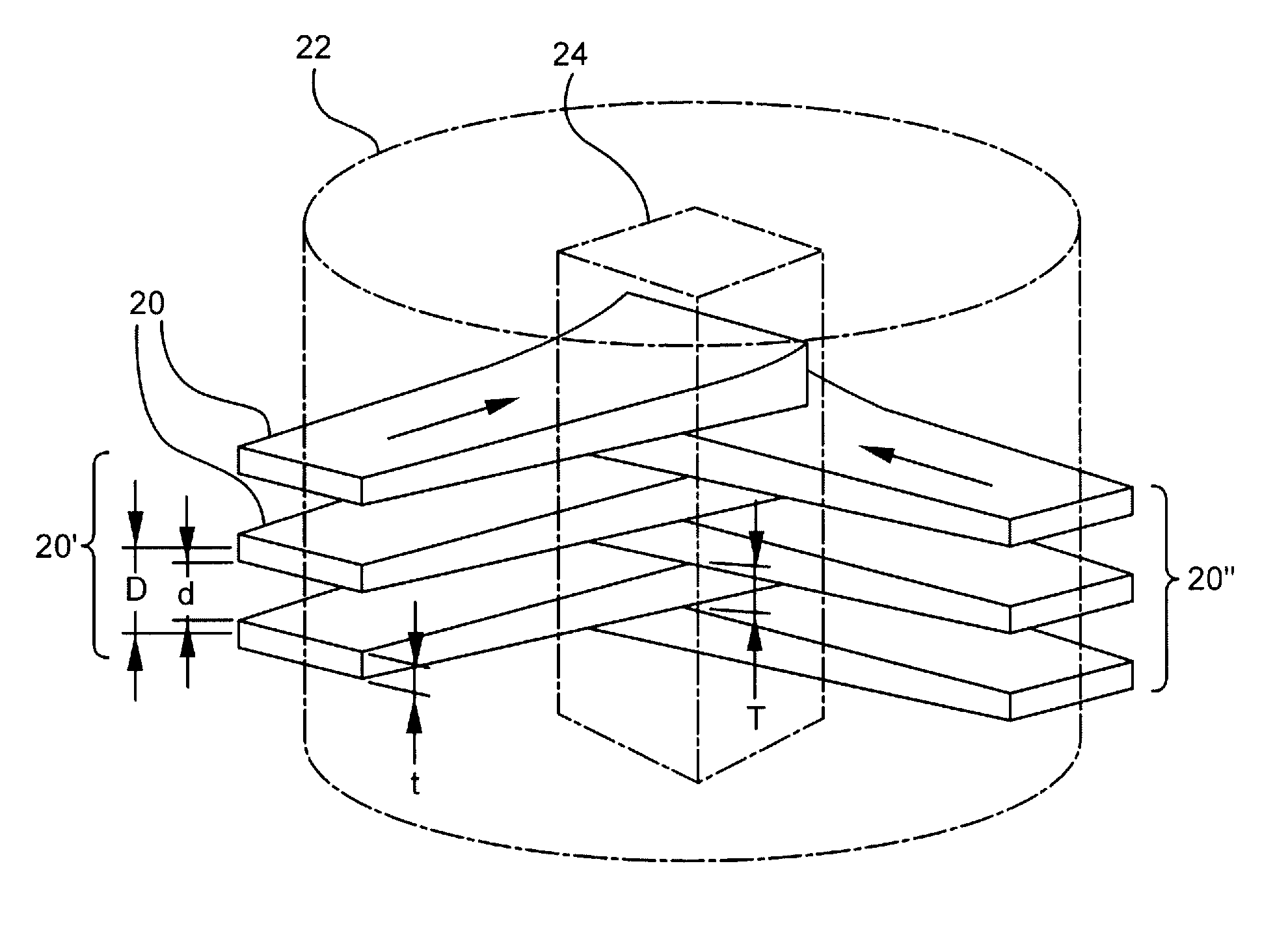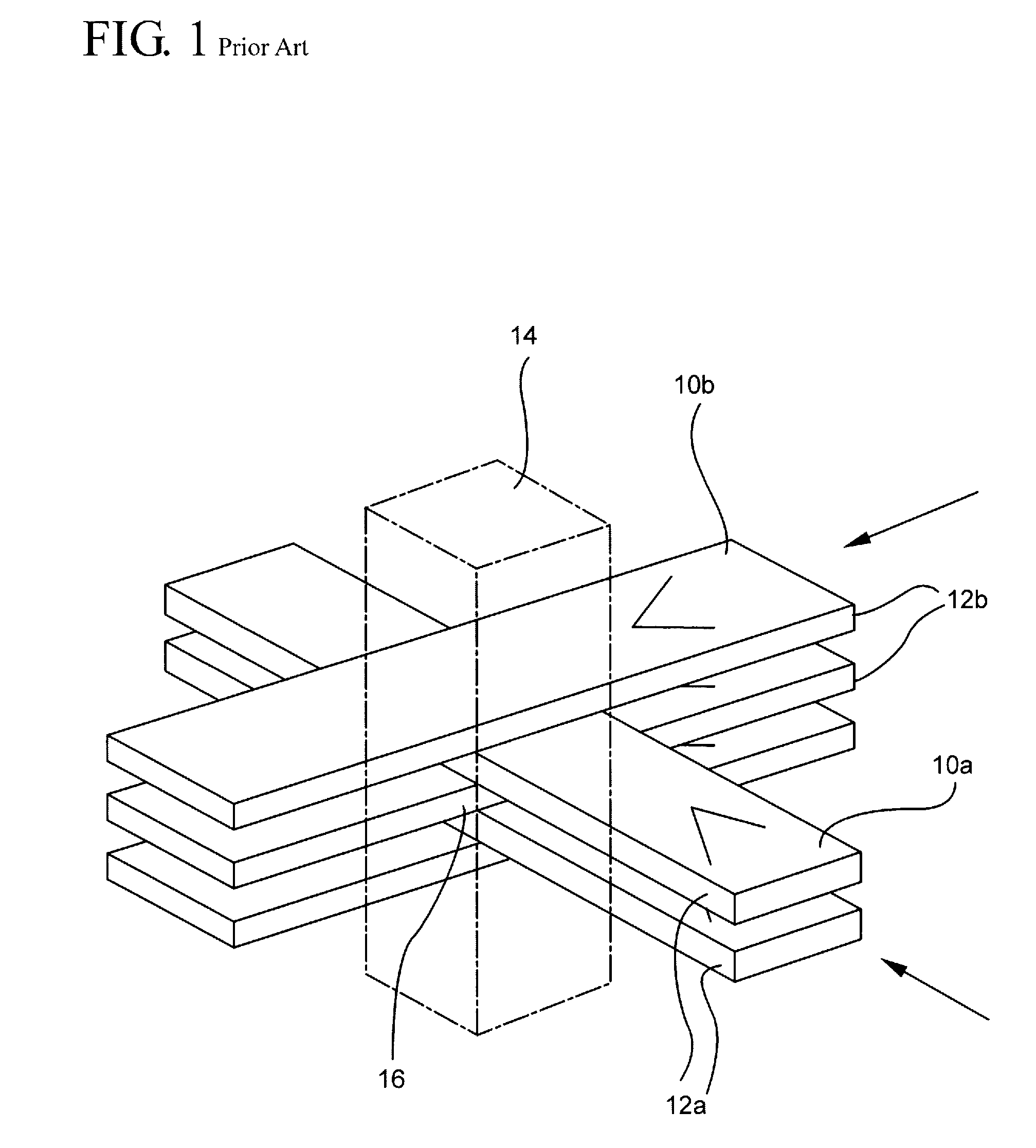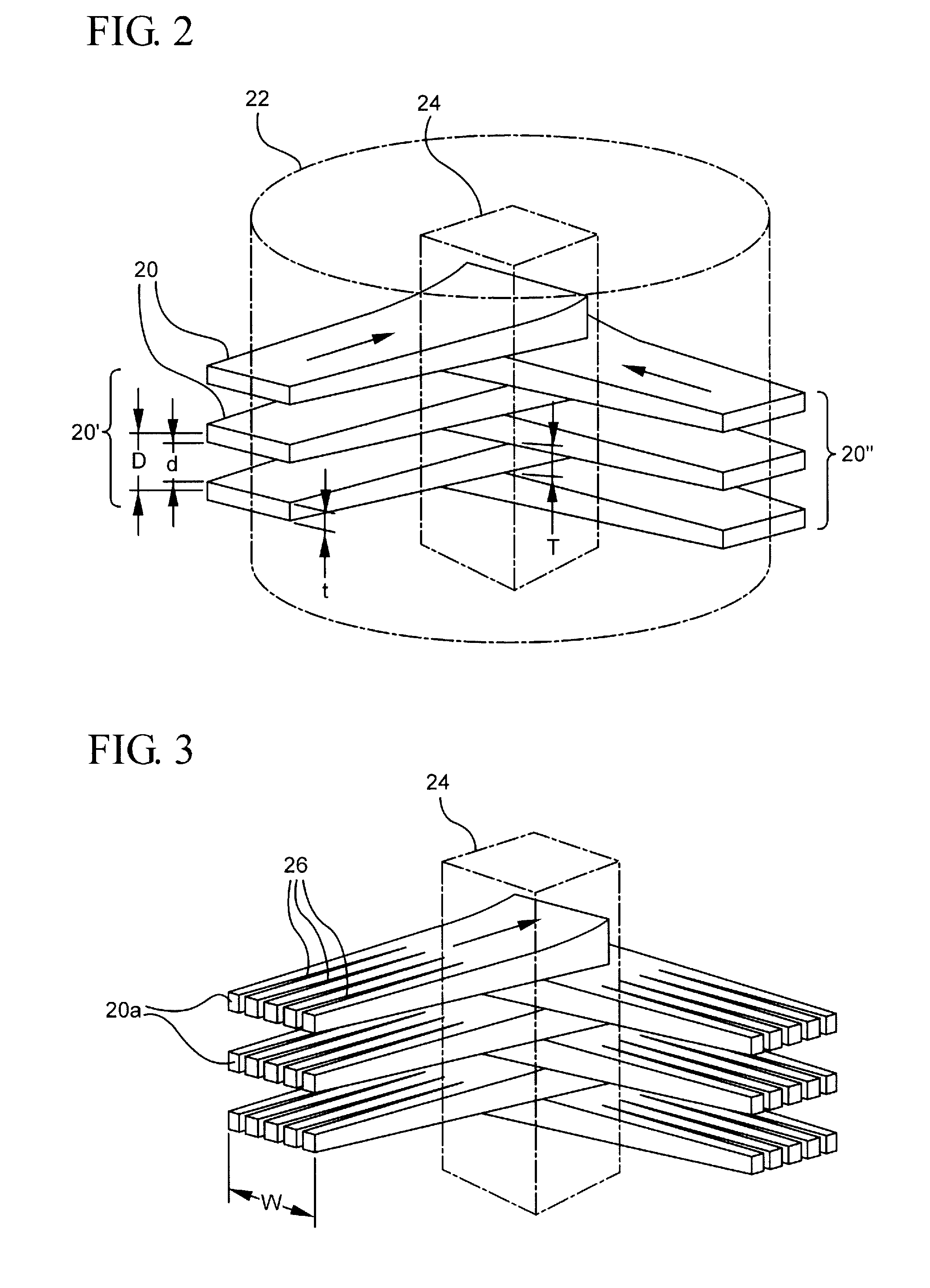Heavy ion therapy with microbeams
a microbeam and ion therapy technology, applied in the field of heavy ion therapy with microbeams, can solve the problems of inability to be completely satisfactory and effective in all instances, limiting the effect of conventional radiation therapy, and highly radiosensitive structures located in the vicinity of the target, so as to reduce damage, enhance the delivery of therapeutic dose, and reduce damage to normal tissue
- Summary
- Abstract
- Description
- Claims
- Application Information
AI Technical Summary
Benefits of technology
Problems solved by technology
Method used
Image
Examples
example 1
[0064]An experiment of the present invention to evaluate the tolerance of the normal rat brain to exposure with iron microbeams of 600 MeV / nucleon was carried out. Rats were irradiated in their brains anteroposteriorly with four horizontal microbeams, each 0.3 mm high, 12 mm wide, spaced 3.5 mm on center, at 2, 10, and 20 Gy. H&E histology 3 months later showed no damage to any brain.
example 2
[0065]In another experiment to evaluate the effectiveness of interlaced carbon microbeams, the method according to the present invention was used to ablate a 6.5-mm diameter target in a rabbit's brain. The beam arrays were made of 0.3 mm thick carbon microbeams spaced 10.5 mm on-center. The rabbit was irradiated from four 90-degrees angles with a dose to the target volume of about 40 Gy physical dose in a single session. Assuming an RBE of 2.2, this dose is equivalent to an x-ray dose of 88 GyE. The dose ablated the target volume but there was little or no damage to the surrounding normal brain as evaluated 6 months later by histological studies using H&E tissue staining.
[0066]The advantages of heavy ion interlaced microbeams over conventional radiation therapy and radiosurgery are numerous. Interlacing beams of heavy ions exposes the normal tissues to microbeams only, while the target, which can be a tumor, is subjected to a solid, unsegmented radiation field resulting from the int...
PUM
 Login to View More
Login to View More Abstract
Description
Claims
Application Information
 Login to View More
Login to View More - R&D
- Intellectual Property
- Life Sciences
- Materials
- Tech Scout
- Unparalleled Data Quality
- Higher Quality Content
- 60% Fewer Hallucinations
Browse by: Latest US Patents, China's latest patents, Technical Efficacy Thesaurus, Application Domain, Technology Topic, Popular Technical Reports.
© 2025 PatSnap. All rights reserved.Legal|Privacy policy|Modern Slavery Act Transparency Statement|Sitemap|About US| Contact US: help@patsnap.com



